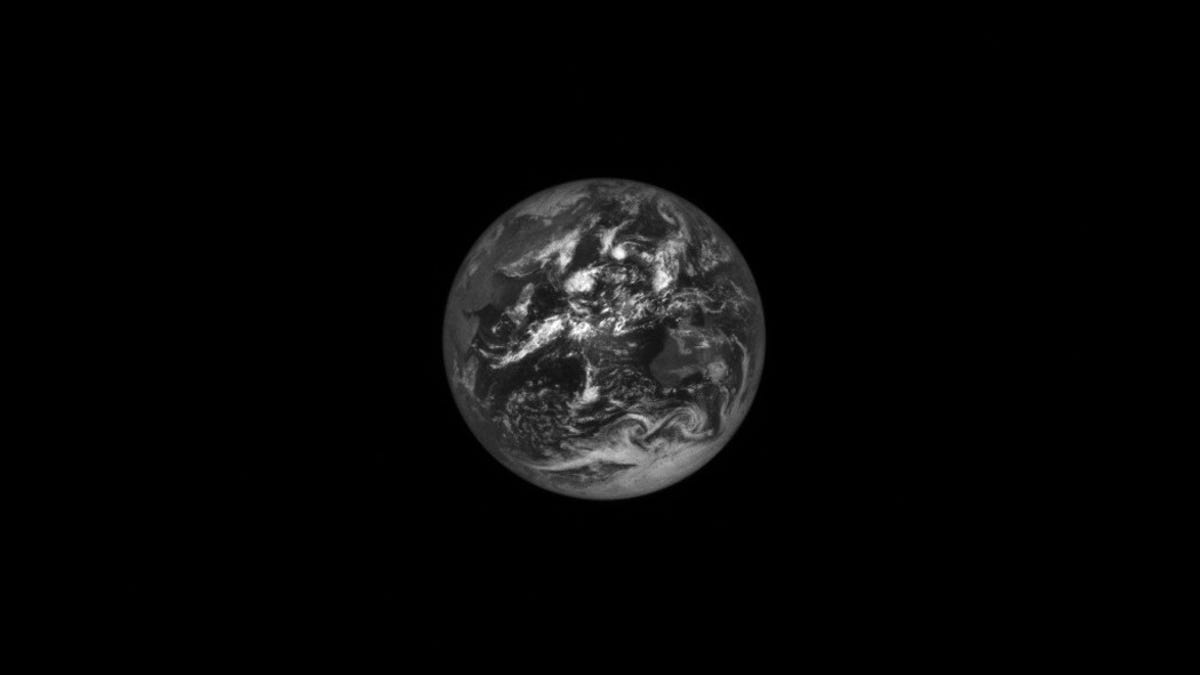NASA Spacecraft Snaps Haunting View of Earth From 380,000 Miles Away
Looking kind of lonely there, Earth.
NASA's Lucy spacecraft is on a mission to visit Jupiter's ancient Trojan asteroids, but it took time during its journey to capture some poignant views of its home planet. NASA shared the images on Tuesday, and they serve as a reminder of just how solitary our planet is.
A stark black-and-white image from Oct. 15 shows our marble with mottled clouds against the dark backdrop of space . Lucy snapped the view from a distance of 380,000 miles (620,000 kilometers). "The upper left of the image includes a view of Hadar, Ethiopia, home to the 3.2 million-year-old human ancestor fossil for which the spacecraft was named," NASA said in a statement.
Lucy's Terminal Tracking Camera (T2CAM) system took the Earth image during an instrument calibration sequence. The camera system's ultimate purpose will be to help the spacecraft track the asteroids it will visit.
NASA shared a second image showing both Earth and the moon as seen by Lucy on Oct. 13 at a distance of 890,000 miles (1.4 million kilometers). The planet and the moon look small as they face each other across a black divide.
You might have to look hard to spot the moon on the left. Earth is easier to see on the right in this Lucy spacecraft image.
The images came from a crucial moment in Lucy's travels as it headed for Earth for the first of three planned gravity assists. "These Earth flybys provide Lucy with the speed required to reach the Trojan asteroids -- small bodies that orbit the sun at the same distance as Jupiter," NASA said.
Lucy is in this for the long haul. It launched in late 2021 and its primary mission is set to last for 12 years. NASA likens the asteroids it will study to fossils that will offers scientists a way to study the formation of the solar system.
Lucy's portraits are like a visual love letter to our planet, a watery little jewel suspended in the great darkness of space.


